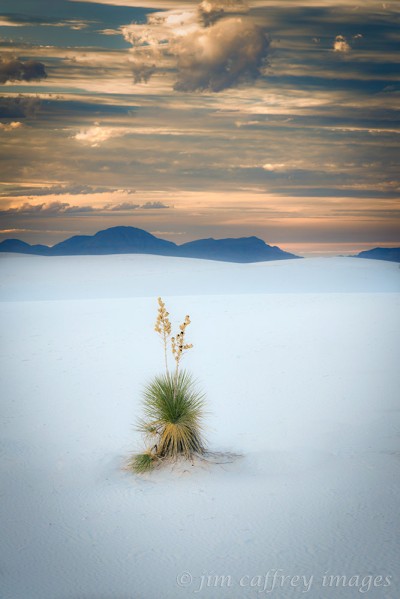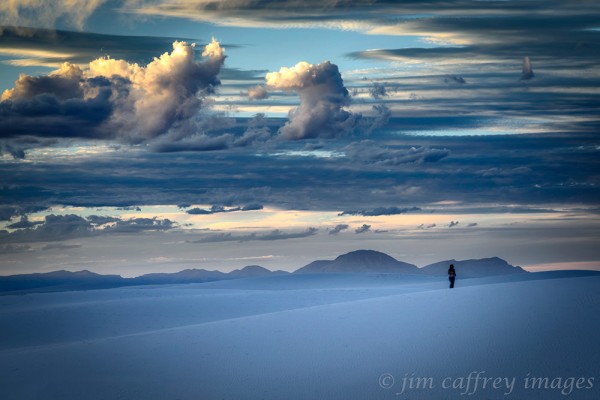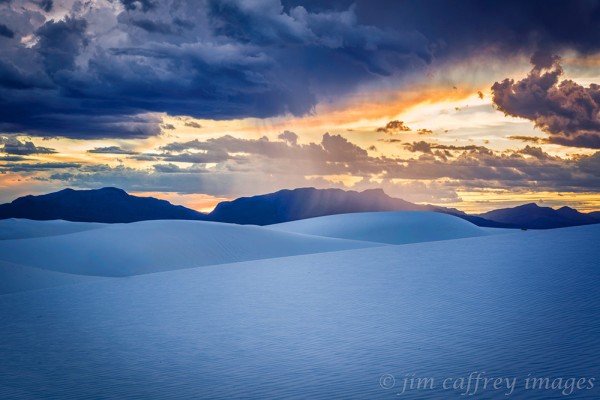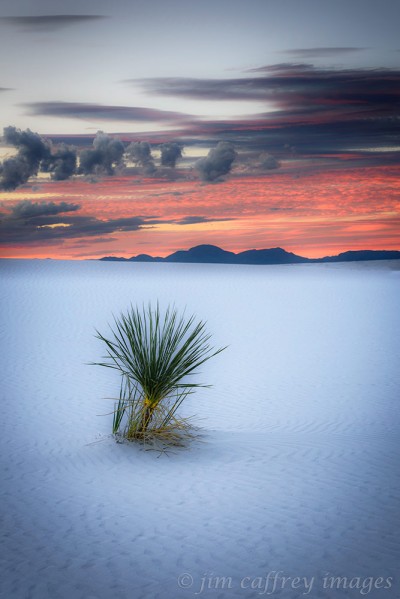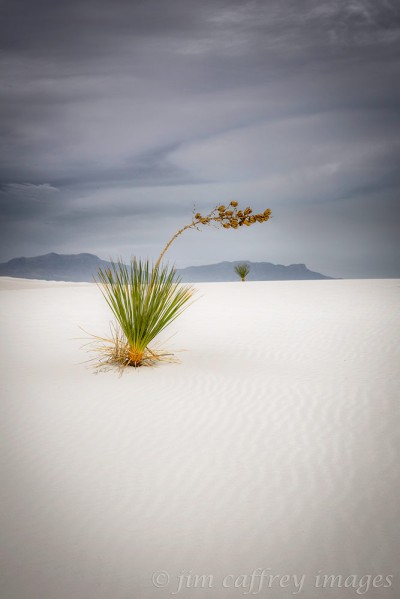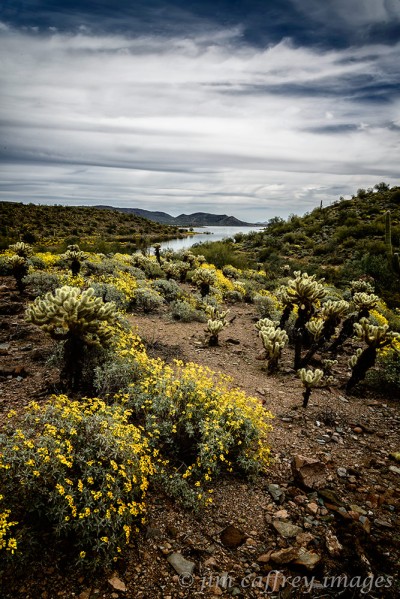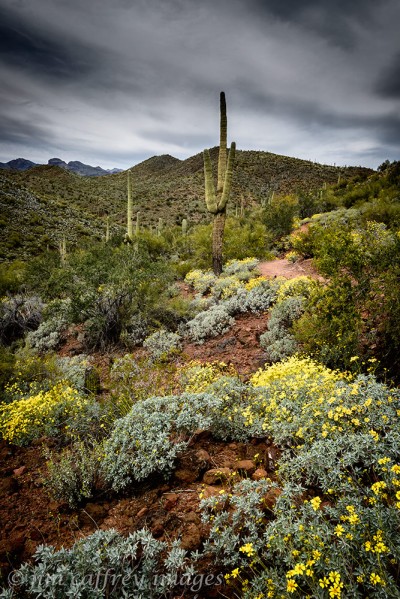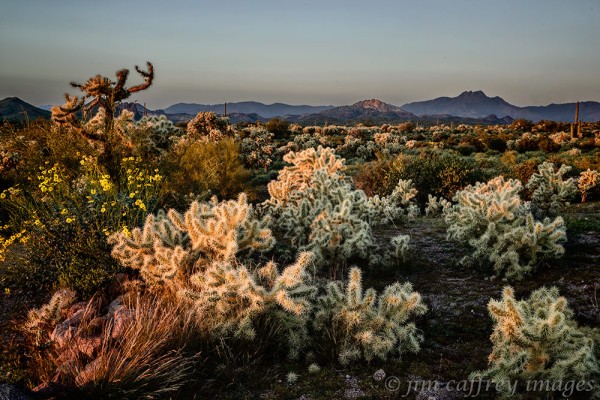Found Memories
I make it a habit to dig into my archives every so often just to see what might jump out at me. I am usualy pleasantly surprised and also find myself wondering why I didn’t see the possibilties of these images back then. The answer is, in most cases, a change in my perspective, or perhaps a maturation of my vision. In other cases, a simple change in long-standing habits, otherwise known as getting out of a rut.
 I was in Lake City, Colorado for the Lake City Wine and Music Festival. After the two day event, I took a ride up the road to Cinammon Pass which summits at nearly thirteen-thousand feet. Somewhere along the way I made this photograph of a stand of aspens. I guess I didn’t think it worthy of any further work when I edited my photos from that trip. I let my expectations get in the way sometimes and when I revisit images later, those biases no longer inhibit my judgement.
I was in Lake City, Colorado for the Lake City Wine and Music Festival. After the two day event, I took a ride up the road to Cinammon Pass which summits at nearly thirteen-thousand feet. Somewhere along the way I made this photograph of a stand of aspens. I guess I didn’t think it worthy of any further work when I edited my photos from that trip. I let my expectations get in the way sometimes and when I revisit images later, those biases no longer inhibit my judgement.
 The shading and texture of these deep erosion channels at the foot of Cainville Mesa caught my eye as we were driving past on the way to Factory Butte. I didn’t have a long telephoto lens with me, so I borrowed my friend Robin’s 70-300 and made this image. I didn’t think anything else about it and skipped right over it when I edited and processed my work from that trip. But looking at it now, I see the things that compelled me to make the photograph in the first place.
The shading and texture of these deep erosion channels at the foot of Cainville Mesa caught my eye as we were driving past on the way to Factory Butte. I didn’t have a long telephoto lens with me, so I borrowed my friend Robin’s 70-300 and made this image. I didn’t think anything else about it and skipped right over it when I edited and processed my work from that trip. But looking at it now, I see the things that compelled me to make the photograph in the first place.
 The coastal redwoods in northern California are an experience. It’s like being transported to another world, at least it seems that way to me, a desert rat who has lived for more than forty years in the desert southwest. This patch of rhododendrons was growing right along the road; the contrast between the delicate leaves and blossoms, and the looming immensity, and mystery of the trees disappearing into the mist in the background captured my imagination.
The coastal redwoods in northern California are an experience. It’s like being transported to another world, at least it seems that way to me, a desert rat who has lived for more than forty years in the desert southwest. This patch of rhododendrons was growing right along the road; the contrast between the delicate leaves and blossoms, and the looming immensity, and mystery of the trees disappearing into the mist in the background captured my imagination.
 I try to do any cropping to an image in camera, in other words, as I’m making the image. I very seldom crop photographs when I’m processing them. But this one was nagging at me. the left side of the image was not doing anything, it was an unwanted appendage. At the same time, I didn’t want to lose too much of the brooding clouds at the top. The answer was to change the aspect ratio from the normal 2:3 of 35mm or, in this case, full frame digital to 4:5. I like the result. The subject is the Yeibichei Rocks in Monument Valley.
I try to do any cropping to an image in camera, in other words, as I’m making the image. I very seldom crop photographs when I’m processing them. But this one was nagging at me. the left side of the image was not doing anything, it was an unwanted appendage. At the same time, I didn’t want to lose too much of the brooding clouds at the top. The answer was to change the aspect ratio from the normal 2:3 of 35mm or, in this case, full frame digital to 4:5. I like the result. The subject is the Yeibichei Rocks in Monument Valley.
 I often go to Tucson in February or March to photograph the blooming desert. In a good year, the wildflowers carpet large parts of the desert landscape. I remember very clearly the making of this image. This saguaro cactus was right across a dirt road from where my campsite was located. The sun had just set and, in the twilight’s glow, the clouds were a salmon color. This particular cactus was probably thirty feet tall and in order to isolate it, I had to be pretty close (once again, I found myself without a long telephoto lens. I have since started bringing at least my 80-200 Nikkor along on all my trips). The point is that the farther away you can get from a tall subject such as this, the less vertical perspective will be obvious in the image. I was able to do some correction in Lightroom, but I would rather make the corrections during the making of the photograph.
I often go to Tucson in February or March to photograph the blooming desert. In a good year, the wildflowers carpet large parts of the desert landscape. I remember very clearly the making of this image. This saguaro cactus was right across a dirt road from where my campsite was located. The sun had just set and, in the twilight’s glow, the clouds were a salmon color. This particular cactus was probably thirty feet tall and in order to isolate it, I had to be pretty close (once again, I found myself without a long telephoto lens. I have since started bringing at least my 80-200 Nikkor along on all my trips). The point is that the farther away you can get from a tall subject such as this, the less vertical perspective will be obvious in the image. I was able to do some correction in Lightroom, but I would rather make the corrections during the making of the photograph.
 Here is another photograph from one of my Arizona springtime trips. I had read about crested or cristate saguaros and set about finding one. A crested saguaro is a mutation which causes the cactus to fan out, usually at its head. The mutation is thought to be caused by some event (a lightning strike, or possibly a freeze) which interferes with the plant’s normal growth.
Here is another photograph from one of my Arizona springtime trips. I had read about crested or cristate saguaros and set about finding one. A crested saguaro is a mutation which causes the cactus to fan out, usually at its head. The mutation is thought to be caused by some event (a lightning strike, or possibly a freeze) which interferes with the plant’s normal growth.
 I’m not sure why this photograph escaped me during the first go round. I made the image on my first visit to Bandon Beach. I had been looking forward to photographing there and I spent an entire morning moving up and down the beach making pictures. None of those images met my expectations at the time; this one languished in my archives until just recently. There’s a moral to this story: take the time to review your archived images. There are probably some gems waiting there for you to finally recognize their potential.
I’m not sure why this photograph escaped me during the first go round. I made the image on my first visit to Bandon Beach. I had been looking forward to photographing there and I spent an entire morning moving up and down the beach making pictures. None of those images met my expectations at the time; this one languished in my archives until just recently. There’s a moral to this story: take the time to review your archived images. There are probably some gems waiting there for you to finally recognize their potential.
No Balloons, No Problem
The last time I was at White Sands was three years ago for the White Sands Balloon Invitational. Since then, they have been launching the balloons from a park in Alamogordo; somehow, it’s not quite the same. So, it was a pleasant surprise when I discovered that the balloons would be launching from the monument again this year.
We arrived in Alamogordo in the late afternoon, made a quick stop at the motel, and drove to White Sands. There were storms over the San Andreas Mountains to the west and the cloud cover resulted in a soft, glowing light, as well as a dramatic sky (right up my alley!)
One of the first things I noticed about the dunes was the softness of the texture. Usually, the ripples are sharply accentuated, and side lighting makes them stand out. But, now they were softer, probably from the effects of wind and rain. The whole feel of the place was different from other times I have visited.
The result was a calm and peaceful energy that found it’s way into my photographs. A distant figure walking on the dunes became a dream-like vision. The rain falling on the San Andreas Mountains twenty miles away was transformed into a sheer curtain partially obscuring the mountains. And all of it was lit by a soft, gauzy light.
As the sun began to set, the sky was ablaze, and the dunes were dressed in evening blue. it’s rare that I am so excited by a scene that I can feel my pulse quicken.
It was well past sunset when we had to leave for the night. But, I was quite satisfied with the images I had made, and I was looking forward to the balloons the next day.
The next morning, we awoke at 4:30 in order to be at the gate in time for the 5:30 opening. After driving to the parking area near the picnic areas, we set out onto the dunes to find a good spot from which to photograph the mass ascension. But the sky to the east was dark and the winds aloft delayed the 7 AM launch time. We meandered around the dune field making images and soon lost track of time. By about 9:30 we began to realize that the launch was not going to happen. It was somewhat disappointing, but we were having such a good time with our cameras, we soon got over it.
Once again, the atmospheric display made a stunning backdrop for the never-ending story playing out on the dunes. The dark sky provided a stark contrast to the white sand, and the soft glow rendered by the overcast made a fitting palette for the dunes and the soaptree yuccas.
The Rio Puerco In Bloom
The Rio Puerco Valley is an arid place. The colors are usually limited to browns and sparse, muted greens. But, in a good year, when there are generous spring rains and a healthy monsoon, the desert comes alive; late spring, and early summer will see an abundance of colorful blossoms on the cacti, and the shrubs that grow and cover the landscape as far as the eye can see.
Since we are currently experiencing those very conditions here in the high desert of northern New Mexico, I was excited to see a cane cholla covered with reddish-purple blossoms as I was driving home a few days ago. The next day I packed my gear and headed into the expanse of the Rio Puerco Valley, certain that I would find it full of blooming chollas.
My expectations were confirmed as soon as I turned onto the county road that leads into the valley. The rolling plains on both sides of the road were covered with cane chollas and flowering plants in bloom. As I made my way through the small village of San Luis and deeper into the broad valley, my excitement grew. Everywhere I looked, it seemed, were colorful blossoms–mostly reddish/purple or yellow.
The day was pregnant with possibilities; the weather was stormy, and as I watched from deep in the wilderness, a cloud opened and began dropping virga over the landscape. Virga is an observable precipitation that drops from a cloud, but evaporates before it reaches the ground. I managed to make several good images that contained the event before it dissipated.

A lone cholla blooms as a summer rainstorm passes over Cerro Guadalupe, Cabezon Peak, and Cerro Santa Clara
By the time I reached the ghost town of Guadalupe, I had already made over two hundred images and there was still plenty more to do. I parked the car and walked through the familiar landscape. I had photographed in Guadalupe many times before, but never with the desert in bloom the way it was now. This was a remarkable contraposition between the hope of prolific reproduction and the disappointment of broken dreams.

A cholla blooms in the ghost town of Guadalupe, New Mexico in a remote section of the Rio Puerco Valley
When you have photographed an area as much as I have photographed Guadalupe, it can be difficult to remain fresh, to create something new, but the chollas, which I usually see as just another part of the landscape, were now transformed into something more. I was able to see and use them as elements of counterpoint in my compositions. I think that made a big difference in how I saw the scene, and created the images.

A lone Cane Cholla bears witness to the slow decay of adobe buildings in the ghost town of Guadalupe, New Mexico in a remote section of the Rio Puerco Valley
One image in particular required that I step out of the box. There is a section of wall that remains standing while totally separated from the rest of the building it had been part of. Several years ago, I made an image of the wall with a crumbling two-storey building visible through the door opening. Being a creature of habit, it tried (unsuccessfully) to frame both the building and a blooming cholla in the opening. I finally gave up, and as I was walking away, I turned and saw what became the above image. I love it when failure leads to success.

Several adobe buildings being worn down by the elements in the ghost town of Guadalupe, New Mexico deep in the Rio Puerco Valley
After spending several hours working the location, I decided to pack up and head home. I made one last photograph before getting to the car to the drive back to the highway. But, before leaving I decided that I had to see inside an abandoned dwelling that I had (again) photographed several years previously. I wanted to see if any of the things that made the scene seem melancholy to me were still intact. The place had since been boarded up, but one of the doors was still ajar, and sure enough there was the shirt and hat hanging on the pegs above the turned down bed in the ruined bedroom of a two room shack. It made the setting seem, somehow, even more wistful than it had been when Robin and I first stumbled upon it.
So, I drove back toward the paved road promising myself that I would return again soon to photograph this place that I have come to love as much for the associations that it has as for the scenery. As anyone who knows me will tell you there is no such thing as a last photograph. Just south of San Luis I saw this image right along the edge of the road. For me, this says it all, while beauty is certainly in the eye of the beholder, I can’t imagine anyone seeing a sight like this and not being filled at least to a small degree with awe .
Springtime In Arizona
I have been planning a trip to southern Arizona to capture the spring wildflowers in bloom for several years. Something else always seemed to take priority. This year I finally just packed the car and started driving. I went first to Tucson where I lived for a short time in the late 70s. I was looking forward to seeing the place again.
The town has changed a great deal in the ensuing years. The places I could recognize were lost in a miasma of new construction, freeway signs, and traffic that bore little resemblance the place I remembered. I fled to the desert, which was really the point of the trip after all. Getting out of town took way longer than it should have, but I finally made it to Saguaro National Park where I spent the remainder of my first day lost in the healing process of making images.
I spent ten hours driving, walking, and making photographs. I wasn’t as excited as I should have been. The clear blue Arizona sky was boring, as was the light, especially at mid-day. As the sun moved lower in the sky, I noticed some clouds building on the western horizon; they were infused with a magnificent orange glow. I pulled over at a likely spot, parked the car and wandered into the desert. I had a specific image in mind and, as I walked through the cactus forest, I found what I was looking for. Teddy Bear Chollas have a kind of ephemeral quality about them, especially when they are backlit. The light shining through the clustered spines creates a halo of luminescence around them. Their soft, fuzzy appearance belies the reality, Those spines are barbed, and if you are unlucky enough to come too close, the result can be quite painful.
After a day shooting in Saguaro National Park, followed by another long drive back into Tucson (long due to traffic, not distance), I decided to head north towards Phoenix in hopes of finding more wildflowers. It was not a lack of quantity, or quality that fueled my decision; there was plenty of brittlebush blooming in the Tucson area, but I was really hoping to find some Mexican Poppies.
I took the back roads through Oracle, Arizona–one of my favorite writers, Ed Abbey, spent some time there in his later years. On the way I spent part of the day visiting Biosphere 2, before continuing on my way in search of photographs. I eventually arrived at Lost Dutchman State Park near Apache Junction a couple of hours before sunset. Once again, I found myself wandering through stands of cholla and Saguaros waiting for the sun to fall below the horizon. Besides the thrill of the pursuit of images, the experience of solitude in a remarkable landscape is one of the most rewarding aspects of a trip like this.
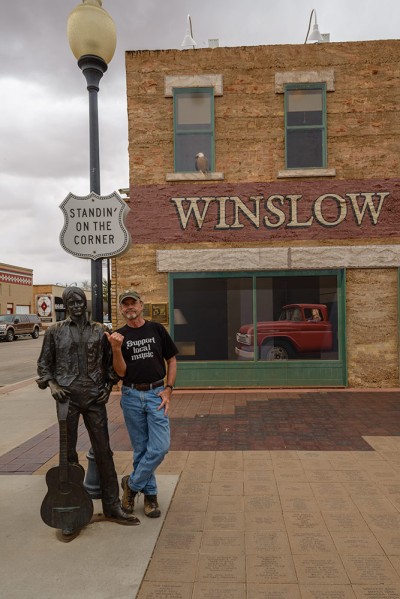
On the way home I stopped in Winslow, Arizona to pose with Jackson Browne. “Standin’ on a corner in Winslow, Arizona…”
I never did find the poppies, but all in all, it was a worthwhile trip. I managed to make some nice photographs, and to visit some old friends who live in Phoenix. On the way home, I stopped at a corner in Winslow made famous in song. The statue and “park” are the most noteworthy things I saw in the town, although friends have informed me that there is a good restaurant in one of the old hotels. Maybe I’ll check it out when I return in search of the poppies next year.
Winter White (Balance)
The title of this post has nothing to do with color correction, or the temperature and tint of images. It has to do with the feeling that comes over me when I find myself enveloped in a cloud, surrounded by a world of white.
A good snow has become a rare thing here in the Jemez Mountains. So, it was a pleasure to wake up to nearly six inches of wet, white stuff recently. I dug my snow boots out of the back of my closet and ventured out into the white.
Growing things become dormant during the winter, but they are still an integral part of the landscape. I found these elongated clusters of seed pods and I was struck by both the contrast between and the similarity to the cottonwood trees in the background. The snow on the branches and on the ground served to intensify the graphic elements of the scene.
This scene of a snow covered bridge over the Jemez River needed only one element to make it complete: a human figure. Since I was the only one around, I volunteered myself. I set the timer on the shutter release and walked across the bridge.
These snow covered cholla cacti caught my eye; their prickly spines covered with a fresh coat of soft snow provided a conceptual as well as visual contrast.
The spring run-off usually happens in late April to mid-May. This is the earliest I have ever seen the river running this high and murky. I used a 3 stop neutral density filter to slow the shutter to 2.5 seconds in order to render the water as a smooth, chocolate colored flow with vanilla streaks. The background is lacking the rincon (a curved cliff face) which is normally visible from this vantage, but it is obscured by the low-hanging clouds.
The chiseled geology of Soda Dam is softened somewhat by the snow. There is never a lot of snow around it due to the warmth of the ground. Soda Dam is formed by a small warm spring that has laid down the calcium-carbonate deposit over thousands of years. The small waterfall was in deep shadow, so I made two exposures, one for the scene, and one for the waterfall. I then blended the two in Photoshop using a layer mask.
This final image was made in my driveway. I love the contrast of the trees against the nearly featureless, white…ish background. The normal view includes a ponderosa pine covered ridge.
By mid-afternoon, the world was back to normal, and most of the snow was melting. These ephemeral transformations are short-lived, but they serve to emphasize the things that I love about the place I chose to make my home.
The Creative Workflow (WYSIWYG)
I am constantly on the lookout for new images. Even while I’m driving, one eye is searching for a photograph. But, to really see, it is important that I be present so I can delve into the potential image, dissect it and study the relationships between the elements. What is the best way to do this? What should I look for as I move through this process?
The first step is to ask myself: What was it that drew me to this scene? Usually it was a singular object, or a play of light over the landscape. The Soaptree Yuccas, the sidelit patterns, and the subtle light on the sand dunes at White Sands National Monument were what grabbed my attention and led to this first image. Understanding my motivation made it easier realize what I want to say with the photograph.
Next I had to frame the scene in a way that would tell the story in the best way possible. I placed the closest yucca up front, but a little off center, leaving little doubt that it was the main subject of the image. This placement also allowed me to separate it from the others in the middle ground and avoid a confusing and static composition. My choices for the exposure had to be based on the dynamic range of the scene, which, In this case, was pretty wide considering the bright highlights on the sand in the distance, and the dark tonality in the shadows near sunset.
The first technical requirement was that I capture a broad dynamic range, so I made a bracketed series of exposures that covered the entire spectrum of tonalities in the scene. Even though I didn’t need to use all the different exposures, it’s better to have them and not need them than it is to need them and…well you know. The next requirement was that the depth of field be wide enough to have sharp details front to rear. Because of the low light level at the time of day I was shooting this, the fact that I was shooting at the lowest possible ISO–to achieve the best possible image quality, and the small aperture needed to get the depth of field I required, my shutter speed was relatively slow–1/10th of a second. That meant that I needed to shoot with my camera mounted on a tripod (something I usually do anyway). It’s easy to see from this cause and effect chain how my creative workflow was based not only on composition and design elements, but also included technical considerations.
The second image of Sandhill Cranes at Bosque del Apache National Wildlife Refuge was made at twilight, that special time in the evening just after the sun set and the light is bouncing off the upper atmosphere. I was taken by the reflection of the colored sky and the reeds in the placid water of the foreground, and the transition from the smooth to the to the rough texture of the water, which created a layer-like effect because of the sudden change in color and texture. This layer is also where the action takes place: the cranes mingling, spreading their wings, foraging for dinner. There is then an abrupt transition to the golden reeds and the darker background before the final shift to the lighter tonality and magenta shades of the distant mountains and the sky.
I had my camera mounted on my tripod as usual, but I kept the bullhead swivel loose so I could easily pan to follow the movement of the birds. This image also relies on a wide depth of field to preserve sharpness in the details of all the layers mentioned above. I wanted to make the layering effect more obvious, so I boosted the saturation and contrast a little. Once again, the thought process kicks in and the decisions are made. The point of all this is to stress the importance of being involved in the making of an image. If you want a photograph to be yours, you need to put a little of yourself into it, and you need to be intentional throughout the process.
Black and White, Toning, and Split Toning
When you convert an image to black and white, your creative options don’t end there. There are several ways to convey the mood of a black and white image, and strangely they involve color. Anyone who is interested in presenting their photographs in black and white should begin by learning the best way to make the original conversion. Perhaps the most direct method is to convert the image to grayscale using the command in the Image dropdown menu in Photoshop, but easiest is not always best. Before I go any further, let me acknowledge that there are many image editing applications out there, but for the sake of simplicity and because Adobe Lightroom and Photoshop are the applications I use, I will limit this discussion to those two.
A much better way to make your conversions is to add a Black and White adjustment layer in Photoshop, or if you’re working in Lightroom, use the B&W conversion tab in the Develop module. In either case, you will get a series of sliders which include all the colors in the spectrum from red to magenta. By using these sliders, you can adjust the tone of each color as they appear in black and white. In other words, you have much more control over the contrast and tonal range of your monochrome image.
If you want to take your image a little further, you can tone it by checking the tint check box in the B&W adjustment panel in Photoshop. In Lightroom, you can apply the toning by using the Split Toning panel in the Develop module. The image above has a sepia tone applied to it. I normally use at least a small amount of toning on all of my black and white conversions, but if I want to convey a certain feeling, I will use more saturation in the toning. I normally use either a sepia or a selinium tone, but you are not limited to these; you can choose any hue across the spectrum.
Finally, you have the option of doing a split tone. This is done by choosing a tone for the highlights and one for the shadows. There is no option for split toning in Photoshop. It must be done in either Lightroom or Adobe Camera Raw. Using the sliders in the Split Toning panel, you can adjust the hue and the saturation for each of the tones you choose. The above image has a very slight yellowish tone in the light areas, and a bluish (selinium) tone in the darker areas. I chose to use a split tone for this portrait to add a little more visual contrast and interest in the horse’s face.
This last image is one that I used in a recent post. I am re-posting this color version for comparison.
 I chose to make a sepia toned B&W conversion and I think this does a better job of conveying the feeling of melancholy that I had when I first encountered this scene.
I chose to make a sepia toned B&W conversion and I think this does a better job of conveying the feeling of melancholy that I had when I first encountered this scene.
So, the next time you find yourself wondering if your image might look better in monochrome, take some control over the process. You may come away pleasantly surprised.
Black and White (Sands)
White Sands is an incredibly beautiful place. I don’t go there as often as I should; it’s only about a four-hour drive from my door. Every time I do go, I wonder why it’s been so long since my last trip. Of course, for me the attraction is the photography.
The stark landscape provides the perfect ingredients for great black and white images. Each of these photographs was made on the edge of light. The sun was low above the San Andres Mountains to the west.
Simplicity is the key; images that can be reduced to basic compositional elements are the ones that work best in monochrome. They can stand well on their own without the need for color. Don’t get me wrong I love making color photographs; I will continue to do so, but right now, I am re-discovering the power of the black and white image.
These three started as color versions because they were captured in RAW format. I followed my normal workflow, making global post processing adjustments in Adobe Lightroom and then moved them to Photoshop for the fine tweaks. The last step, the black and white conversions, were done in Silver Efex Pro.
I am pleased with the unexpected turn my photography has taken. As I mentioned in a previous post, I started out as a black and white photographer back in the day of chemicals, enlargers, and safelights. I feel like my work has come full circle.
White Sands
White Sands National Monument in south–central New Mexico is unique in many ways, but, by far, the most striking difference from the surrounding landscape is the sand from which the monument gets its name. It is actually gypsum that has washed down from the nearby San Andres Mountains. The gypsum, mixed with water flows on to a large playa (seasonal lake). As the water evaporates, the gypsum sand is left behind, and is then carried by the wind to become part of the dune field.
The White Sands dune field covers approximately 275 square miles of New Mexico’s Tularosa Basin. A little over half of it is part of White Sands Missle Range; the remainder (approx. 115 square miles) comprises the monument. It is an amazing place where the vegetation, and the wildlife cling to life by the most tenuous of threads.
In the summer, daytime temperatures can reach over 100° F., and in the winter, they can plunge to below freezing. If you plan to visit, be sure to come prepared for any kind of weather, and carry plenty of water.
No matter what time of year you visit White Sands, you will be treated to an amazing landscape, and the opportunity to find solitude in the dunes.
Yucca Sunset
Sunset at White Sands National Monument. A lone yucca silhouetted against the darkening sky with the San Andres Mountains in the background. This is the last image I made on my last trip to White Sands. Soon afterward, the light was gone, and I began the walk back to my car.
The white sand that makes up the dunes is actually gypsum crystals that are left when gypsum is eroded from the nearby San Andres Mountains. Over millions of years the dunes have grown into a moving ecosystem–the more active dunes can advance more than 30 feet per year! Plant and animal life must be able to adapt to this movement or perish.
Equipment: Nikon D200, Nikon 17–35 mm f 2.8 zoom lens, Bogen tripod.
Camera Settings: f 20, 1/25th sec., ISO 250
Processing: Contrast, clarity, vibrance, and saturation adjustments in Adobe Lightroom, curves adjustment, and RAW conversion in Photoshop.
Organ Yucca
Another one from my archives. This photo was made while I was visiting my daughter Susan in Las Cruces. The clouds looked as though they were crawling over the Organ Mountains. I drove out into the desert East of town until I found a good spot, and set up my camera and tripod, and made six exposures.
I also made a landscape (horizontal) version.
I’m still trying to decide which one I like best. Any thoughts?
Equipment: Nikon D200, Nikkor 17–35 mm zoom lens, circular polarizer, Bogen tripod
Camera settings: f13, 1/125th sec., ISO 400
Processing: Contrast, clarity, vibrance, and saturation adjustments in Lightroom, Levels adjustments in Photoshop.
White Sands Sunset

White Sands Sunset
This is the last image I made at White Sands on my last trip. The sun was barely above the horizon, and the soft golden light enveloped me in a wave of anticipation. The low angle of the setting sun gave the ripples on the dune a palpable texture.
I think this image does a good job of communicating the fickle nature of the dunes, and the uncertain fate of the life that exists there. One yucca is partially covered by the advancing dune, and another is completely buried except for the dead stalk of it’s blossoms. The exaggerated ripples across the face of the sand suggests the constant movement that is the essence of the dunes.


